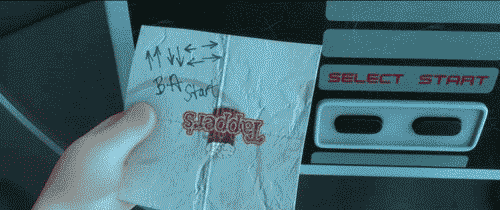useKonamiCode
June 10, 2019

If you are old like me, or are a gamer then you might remember the Konami Code.The code is ⬆️⬆️⬇️⬇️⬅️➡️⬅️➡️B A Doing this on your game controller usually unlocked some hidden feature or give you some super powers.
So whats this got to do with JavaScript?
I have recently been trying to use React Hooks more and this was a good chance to make something useless that would teach me about hooks.
Lets looks at the basic parts that we need to handle the Konami Code:
- Capture key presses from the user
- Keep track of the keys the user has entered
- If the key pattern matches the code return true
- Clear the key pattern if no activity
Capture key presses from the user
We can use the browser API to capture all keypress actions. Using document.onkeydown we can use document.onkeypress however
this does not capture the arrow keys.
Keep track of the keys the user has entered
We need to store the keys pressed in some state, we can use the useState hook.
const [keys, setKeys] = useState([]);
document.onkeydown = e => {
setKeys(currentKeys => [...currentKeys, getKeyName(e.keyCode)]);
};The getKeyName func is just a simple check against the key code
const getKeyName = keyCode => {
switch (keyCode) {
case 37:
return "left";
break;
case 38:
return "up";
break;
case 39:
return "right";
break;
case 40:
return "down";
break;
case 65:
return "A";
break;
case 66:
return "B";
break;
}
};If the key pattern matches the code return true
To do this we can export a isKonamiCode bool that will tell the consuming package if the user has entered the code.
return {
isKonamiCode: isKonamiCode(keys),
keys
};We also export the keys typed encase the consumer wants to log these.
Clear the key pattern if no activity
Lastly we need to clear the keys entered after a set time of no activity. We can do this using setTimeout
let timeout;
document.onkeydown = e => {
clearTimeout(timeout);
setKeys(currentKeys => [...currentKeys, getKeyName(e.keyCode)]);
timeout = setTimeout(() => {
setKeys([]);
}, 3000);
};This hook only made use of useState however it was a simple way to get more exposure to react hooks and make something fun at the same time.
When we put everything together we have the full hook useKonamiCode
const getKeyName = keyCode => {
switch (keyCode) {
case 37:
return "left";
break;
case 38:
return "up";
break;
case 39:
return "right";
break;
case 40:
return "down";
break;
case 65:
return "A";
break;
case 66:
return "B";
break;
}
};
const isKonamiCode = codes => {
return codes.join(" ") === "up up down down left right left right B A";
};
const useKonamiCode = () => {
const [keys, setKeys] = useState([]);
let timeout;
document.onkeydown = e => {
clearTimeout(timeout);
setKeys(currentKeys => [...currentKeys, getKeyName(e.keyCode)]);
timeout = setTimeout(() => {
setKeys([]);
}, 3000);
};
return {
isKonamiCode: isKonamiCode(keys),
keys
};
};Then to use this in a component:
function App() {
const { isKonamiCode, keys } = useKonamiCode();
return (
<div className="App">
<h1>{isKonamiCode && <b>isKonamiCode</b>}</h1>
<h3>{keys.join(", ")}</h3>
</div>
);
}